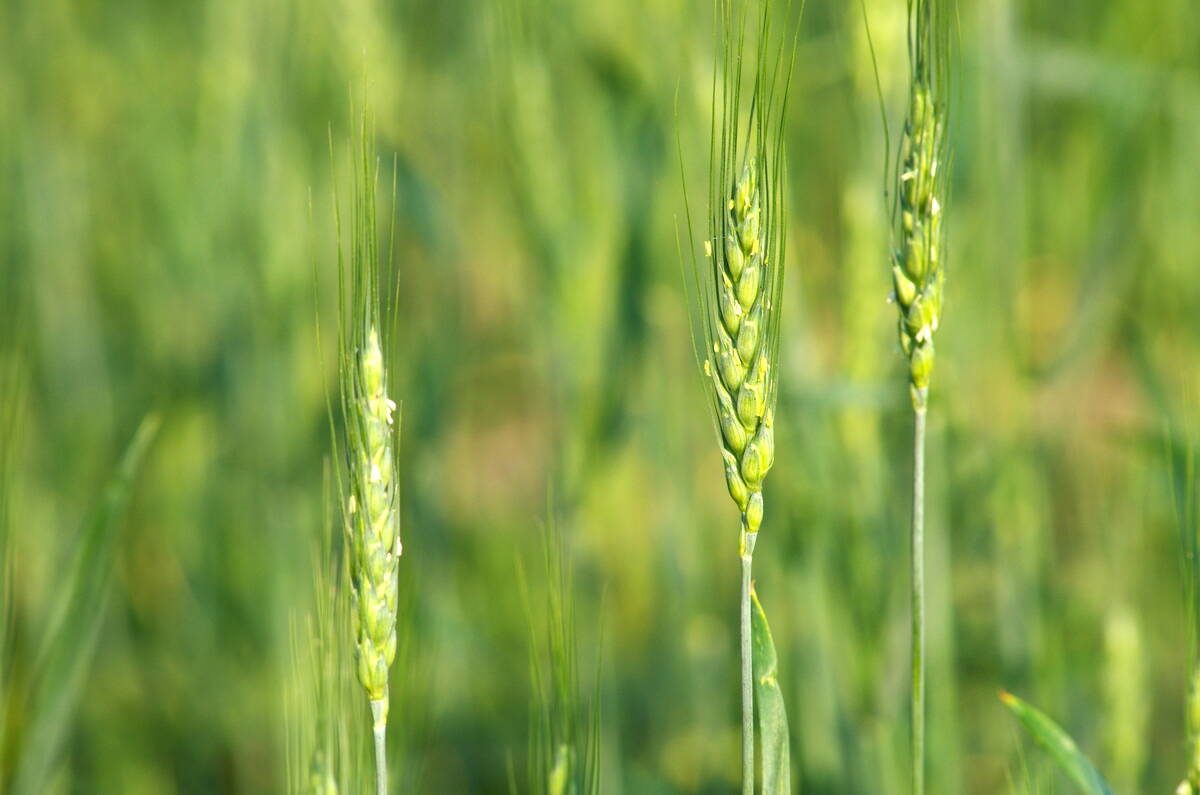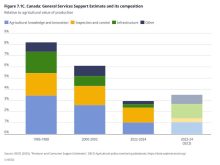Manitoba’s agriculture minister is joining a chorus of industry insiders and fellow provincial ag ministers criticizing the federal government’s 30 per cent fertilizer emissions reduction target.
The federal target was a last-minute addition to the discussion schedule during the meeting of federal, provincial and territorial agriculture ministers in Saskatoon in mid-July.
“The ministers of agriculture from across Canada on the provincial and territorial sides requested that it be put on the agenda,” said Manitoba Agriculture Minister Derek Johnson. “It was not on our original agenda, and it is not tied to SCAP (the Sustainable Canadian Agriculture Partnership).”
Read Also

Code cracked on nitrogen-fixing wheat?
U.S. crop breeders have created a wheat variety capable of fixing its own nitrogen rather than relying on fertilizer.
Why it matters: While not directly linked to the five-year deal agreed to in principle July 22, the goal to lower greenhouse gas emissions from fertilizer use will inevitably impact implementation of the Sustainable Canadian Agricultural Partnership.
Johnson released a statement last week that outlined his concerns with the federal emissions goal launched by Agriculture and Agri-Food Minister Marie-Claude Bibeau in December 2020. His statement followed on the heels of a strongly-worded joint release issued by his counterparts in Saskatchewan and Alberta also expressing displeasure with the emissions goals.
“We’re really concerned with this arbitrary goal,” said Saskatchewan Minister of Agriculture David Marit. “The Trudeau government has apparently moved on from their attack on the oil and gas industry and set their sights on Saskatchewan farmers.”
In the same release, Alberta’s ag minister, Nate Horner, said: “The world is looking for Canada to increase production and be a solution to global food shortages. The federal government needs to display that they understand this. They owe it to our producers.”
Johnson’s statement was more nuanced.
“Reducing emissions is the right path to take, though I strongly believe a more targeted approach that considers the state of change already adopted by Manitoba producers and the cost-benefit of specific changes to reduce GHGs (greenhouse gases) is crucial,” he said.
The statement indicated that reductions could affect Manitoba’s agricultural competitiveness and would unfairly harm small producers.
Johnson cited a study done for Fertilizer Canada by MNP that suggested there would be a precipitous drop in agricultural production (and correspondingly, farm revenue) if the program were to follow the European model. That model requires farmers to reduce nitrogen inputs by 20 per cent to achieve a 30 per cent emissions reduction.
The federal government has not said it would mandate reductions in fertilizer use. Wording in the policy is isolated to reduction of emissions. During a stop in Winnipeg July 18, Bibeau said the federal government is focusing on incentive programs based on fertilizer use efficiency rather than restricting product use. The federal government has announced several such incentives, including $40 million for a Manitoba Association of Watersheds program and another round of funding under the Agricultural Clean Technology program.
“We are investing significantly in incentives for farmers to adopt these best practices and be able to afford these new technologies.” Bibeau said. “We’re pushing the industry to develop faster.”
However, critics fear the government may harden its approach if the industry doesn’t hit emissions reduction targets.
For Johnson, that’s only part of the problem.
“You can’t paint everybody with the same brush, because Manitoba producers are ahead of the curve if you look around the world. We stand with the farmers and recognize the work that they’ve already done.”
Johnson argued that Manitoba producers have been proactive in reducing unnecessary use of nutrients and progress is ongoing. He pointed to the 4R (right source, right rate, right place, right time) approach to nutrient management now circulating in the industry.
“Manitoba was the first prairie province to complete the 4R memorandum of understanding (MOU) with Fertilizer Canada, and our province has worked with Keystone Agricultural Producers and Fertilizer Canada to promote 4R principles and practices since 2013 through a series of three-year MOUs,” he said.
Keystone Agricultural Producers president Bill Campbell said he also has questions and concerns about the federal targets.
“Has there been any acknowledgement and credit for practices that agriculture is currently using?” he asked. “Has there been any conversation about the increase in productivity that agriculture has provided?
“I would suggest that our productivity has doubled in the last generation, and I would think that our fertilizer usage has not increased that dramatically,” said Campbell, also pointing to the adoption of high-tech methods like precision agriculture and environmental stewardship best practices.
“Fertilizer is one of our major expenses, and we do not waste it,” he said. “That’s where we need to have more research, more data and more scientific proof of some of the issues addressed by the federal government. It’s concerning that they’re using a blanket approach when there are so many issues around this conversation.”
Campbell said he’s on board with mitigating climate change, but Canadians need to look closely at the costs and benefits of this policy – economically, socially and environmentally.
“I think there’s a high level of uncertainty. I think there needs to be a balanced approach to determine what the long-term consequences are.
“As a result, we must ensure that there are beneficial policies in place to achieve our desired goals while also maintaining economic and societal benefits. That’s the balance that needs to happen. And that’s the approach that, as agriculture, we need to bring forward to the government.”
Campbell’s conclusion closely mirrors Johnson’s.
“The responsibility for reducing GHGs through food production is a cost that cannot be borne by farmers alone,” the minister said. “Producers have to continue to be involved in discussions on ways to achieve reduction targets and flexibility on approaches is key, given the diversity of production systems and Canada’s land base.
“Affordability, societal benefits, sound science and the full effect on production and profitability in differing environmental conditions must be considered.”
The science of nitrous oxide
Debates around fertilizer leaching and water quality have been around for years, and carbon dioxide is often the culprit tagged when the public talks about climate change. But fertilizer emissions are a relatively new target when policymakers take aim at greenhouse gases.
The specific gas policy makers are looking to curb is nitrous oxide (N2O), cited as being 300 times more potent in its warming effect than CO2.

Denitrification is the commonly identified way the gas escapes the soil, according to Manitoba Agriculture soil fertility specialist John Heard.
“That happens in overly wet soils, when microbes starved for oxygen reduce the nitrate (NO3) in the soil to NO2 (nitrite), then to NO (nitric oxide) and then to N2O (nitrous oxide),” he said.
A more recent discovery has found that a microbial process, which sees ammonia-oxidizing microbes consume ammonium nitrogen (NH4) in the soil and convert it to nitrous oxide, is one of the main drivers of greenhouse gas emissions associated with fertilizer use.
“Not very much leaks out – maybe a pound per acre of N2O – but the multiplier effect makes that 460 pounds CO2 equivalent. So a lot of the emission reduction work is tackling that loss,” he said.
“It’s not what we call a mature science,” he added. “We don’t have all the answers yet. We have measurements and we know what happens, but maybe not why it’s happening.”
















